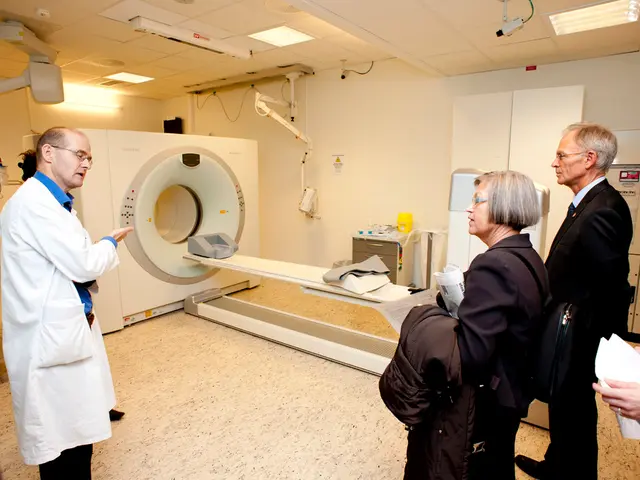Economics of Healthcare Services: Challenges with Costs and Accessibility
Delving into Global Healthcare Economics: Understanding Resource Allocation, Costs, and Access
The realm of healthcare economics holds significant importance, as it clarifies how resources are allocated, the costs involved, and the accessibility of healthcare services. This subject is instrumental in shaping policies and consequently impacts the quality of life for millions worldwide. With escalating healthcare costs and mounting issues regarding access, a profound understanding of the economics behind healthcare is essential to unearth efficiencies and equitable solutions.
Across the globe, healthcare systems exhibit striking variability, stemming from cultural, economic, and political factors. These systems can broadly be categorized into public, private, and mixed models. Public healthcare systems, such as those in Canada and the UK, are sustained by taxes and offer services primarily free at the point of use. Conversely, private systems, dominant in the United States, rely heavily on private insurance and out-of-pocket payments. Mixed systems, embraced in countries like France and Germany, meld elements from both, allowing for a blend of public and private provision. Each model presents unique advantages and disadvantages, offering insights into the intricate landscape of healthcare economics and the compromises associated with each system.
Exorbitant healthcare costs are a concern for individuals, governments, and healthcare providers alike. These costs are classifiable into direct and indirect expenses. Direct costs encompass the prices of medical services, medications, and hospital stays, while indirect costs encapsulate lost productivity due to illness and long-term disability. A myriad of factors contribute to these costs, including cutting-edge advancements in technology, expanding elderly populations, and inefficiencies in administrative practices. Despite the benefits conferred by technological innovations, they frequently arrive with hefty price tags, augmenting overall expenses. As populations age, the demand for healthcare services swells, exacerbating strain on resources. Inefficiencies in administrative tasks also contribute significantly to burgeoning costs. By recognizing and addressing these cost drivers, policymakers can work towards more sustainable healthcare systems that cater to the needs of all stakeholders.
Accessibility to healthcare remains a critical concern, impacting health outcomes and quality of life. Financial, geographic, and societal barriers often obstruct individuals from obtaining indispensable medical care. Financial hurdles, such as lack of insurance or high out-of-pocket costs, form the most substantial obstructions. Geographic barriers, including residing in rural or underserved areas, can also hinder access to care. Social and cultural factors, such as language barriers and discrimination, further complicate the issue. Strategies to improve access include expanding insurance coverage, investing in telemedicine, and enhancing healthcare infrastructure in underserved regions. By enlarging insurance coverage, through public programs or subsidies, financial barriers can be diminished. Telemedicine offers a viable solution to geographic hurdles by permitting remote consultations and care. Bolstering healthcare infrastructure, like building more clinics and developing more healthcare professionals in underserved areas, can also augment access. By implementing these solutions, healthcare systems can transform into more inclusive and equitable networks that ensure ample medical care for all.
Analyzing case studies from distinct countries sheds light on the achievements and struggles of diverse healthcare systems. The National Health Service (NHS) in the UK stands out for offering comprehensive care free at the point of use, funded through taxation. While it excels in equitable access and preventive care, it confronts challenges such as extended wait times and resource limitations. In contrast, the healthcare system in the United States is predominantly private, characterized by high-quality services and advanced medical technologies. However, the steep costs and unequal access pose significant challenges. Another model is showcased by the healthcare system in France, which incorporates a blend of public and private elements. It provides universal coverage with private providers assuming a significant role, resulting in elevated patient satisfaction and favorable health outcomes. Nevertheless, balancing public funding and private provision can prove complex. These case studies underscore the assorted approaches to healthcare and the significance of custom-tailored solutions to the particular needs and contexts of various countries.
The intricacies of healthcare economics necessitate astute and well-informed policy decisions. Collaboration between governments, healthcare providers, and other stakeholders is indispensable for fashioning policies that tackle both cost and access issues. Policymakers should focus their efforts on several key areas. Prioritizing preventive care can reduce future healthcare costs by early detection and resolution of health problems. Championing efficient administrative practices can decrease waste and streamline operations. Addressing social determinants of health, such as education and housing, can enhance health outcomes and reduce disparities. Lastly, embracing technological innovations, like telemedicine and electronic health records, can boost the efficiency and efficacy of healthcare delivery. As healthcare systems evolve, it is crucial to remain adaptable and responsive to emerging challenges and opportunities. By targeting equitable access, sustainable costs, and superior quality care, policymakers can establish healthcare systems that cater effectively to every member of society.
In conclusion, healthcare economics serves as a vital force in shaping the quality, accessibility, and sustainability of healthcare systems across the globe. By investigating the cost drivers, access barriers, and economic principles that govern these systems, we can forge a deeper understanding of their inner workings. Recognizing that no two healthcare systems are identical, examining variegated models and case studies offers invaluable insights into strengths and challenges, highlighting the necessity of tailored solutions. Policymakers must commit to preventive care, efficient administration, addressing social determinants of health, and seizing technological advancements to engineer more efficient and equitable healthcare systems. The future of healthcare depends upon our capacity to learn from past experiences, adapt to emerging challenges, and prioritize the well-being of all individuals. By doing so, we can cultivate healthcare systems that are not only economically sustainable but also equipped to deliver superior quality care to every person.
- As public and private healthcare systems vary considerably due to cultural, economic, and political factors, collaboration between governments, healthcare providers, and other stakeholders is vital for creating policies that address both cost and access issues.
- Understanding the role of science, economics, and policy-and-legislation in global health-and-wellness is essential to unearth efficiencies and equitable solutions in the escalating healthcare landscape, impacting millions of lives worldwide.
- The complexities of global healthcare economics necessitate well-informed decision making, with policymakers focusing on key areas such as preventing future healthcare costs, championing efficient administrative practices, addressing societal determinants of health, and embracing technological advancements to build a more adaptable, responsive, and equitable healthcare system.








